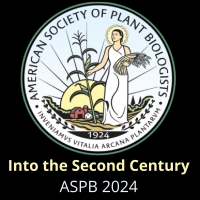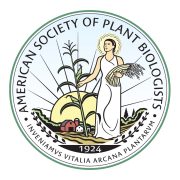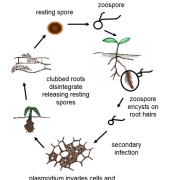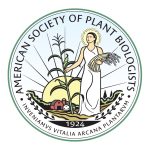Into the Second Century: ASPB 2024
 Rob Last’s Fourth ASPB President’s Letter
Rob Last’s Fourth ASPB President’s Letter
This continues the mini tradition of publishing the President’s Letter as part of a collection of essays and other resources related to the topic (https://community.plantae.org/…). Please also have a look at the previous two collections on member security (https://community.plantae.org/…) and future careers (https://community.plantae.org/…), and send your feedback about these topics and collections to [email protected] or @biokid001 on Twitter.
Members of ASPB will celebrate the organization’s 100th anniversary in 2024. Pause for a moment to let the idea wash over you. ASPB was founded in 1924, a few months after Vladimir Lenin’s death and early in the Jazz Age, when the telegraph was the dominant method for rapid communication. It was five years before the Great Depression, three years before future Nobel laureate Barbara McClintock received her doctorate from Cornell and the birth year of neutral theory population geneticist Motoo Kimura. A long time has passed, with unprecedented social, technological, and political changes. The intent of this letter is to challenge each of us—both as individuals and as members of an international community of 3,000+ members—to think about what makes ASPB relevant, and what will make it continue to serve science and education in the next decade and century.
Why Is ASPB Critical to Thousands of Plant Biologists?
ASPB provides members with goods and services that have great value to the community. Four that are broadly valued by members are as follows:
1. three journals that collectively publish 600+ articles each year—Plant Physiology, established in 1926; The Plant Cell, celebrating its 30th anniversary: and Plant Direct, an open-access sound science journal
2. an annual Plant Biology Meeting that provides an average of 1,500+ attendees exposure to great science and career information and diverse education and career development opportunities
3. Summer Undergraduate Research Fellowships awarded each year to more than a dozen undergraduate students working with ASPB member mentors
4. dozens of travel awards for early career professionals, women, and members of underrepresented minority groups from around the world to attend the Plant Biology meeting each year.
Providing a Public Good Does Not Ensure Longevity
Despite the success of these and other programs, our membership numbers have declined by 40% over the past few years, finally appearing to stabilize in 2018. Other professional organizations are also dealing with membership attrition; although this indicates that our community is not alone in this respect, we should be able to do much better than average.
Membership is not required to get many of the benefits that ASPB offers. You can publish in our excellent journals, enjoying the high standard of review and editorial services provided, and charge your grants the additional nonmember publication and open access charges. Most of the content on Plantae is freely available. Many nonmembers around the world can get the full contents of our journals because institutions pay for subscriptions and ASPB makes all content freely available 12 months after publication. Nonmembers can attend the Plant Biology annual conference by paying a couple of hundred dollars extra. Finally, many of our awards are available to nonmembers.
What Would the Plant Biology Community Look Like Without ASPB?
Why should ASPB and other long-lived professional organizations exist? As social, political, and economic systems evolve, is it inevitable that scientific organizations will perish as a result of the “tragedy of the commons”—the mismanagement of a resource that does not specifically belong to anyone? What would be the outcomes of such a scenario?
Consider a world in which the major functions of ASPB are filled by commercial entities, starting with the journals. What would happen if Plant Physiology and The Plant Cell were sold to a commercial publisher and no longer had ASPB community involvement? It is possible that the current model of high-quality voluntary peer review guided by expert editors would persist, although many commercial journals use full-time professionals to assign and evaluate peer reviews and thus do not benefit from expert oversight. My author experience with Society journals is far superior to my experience with commercially published journals—even those with strong name recognition.
Even if you disagree that Society journals provide added value, it is unarguable that the profits from our journals are the major source of revenues that fund the infrastructure for our conferences, conference travel awards, and education and outreach activities. Our community would lose the ability to fund Summer Undergraduate Research Fellowships, Plant Biology Learning Objectives, Outreach Materials, & Education (Plant BLOOME) grants, Transforming Education in Plant Biology awards, and booths at educator conferences. We would be forced to give up these activities or find other funding mechanisms. However, even if funds were found to maintain these activities, we would lose the professional staff who collaborate with community members to make these programs successful.
The annual meeting could be run by a commercial organization, but this scenario is a poor cousin to our current system. I have gone to a few for-profit conferences and never found them to be of high enough quality to merit attending a second time. The conferences would be more expensive to attend because we aim only to break even on our meetings, and when a conference loses money, it is subsidized with journal revenues or endowment. The program would not include as many early career presenters; speakers with broad name recognition tend to be favored when large registration revenue is sought. And there would be relatively few networking and career development activities unless paid for by sponsors. It would be challenging to coordinate with other organizations, such as in our triennial collaboration with the Canadian Society of Plant Biologists, because a commercial entity would be involved. Innovating with new meetings such as Phenome and the Plant Synthetic Biology conference would be challenging for at least two reasons: community members are less likely to be motivated to serve a commercial enterprise, and a company would need to make a profit, even on a fledgling conference.
Future-Proofing ASPB
I hope the last few paragraphs convince you that ASPB is worth your support and, at a community level, is too important to fail. As we approach the 2024 centenary, we have plans to strengthen the Society’s finances and mission in preparation for the next hundred years. What can you do to make ASPB a resource for the 22nd century?
You can support ASPB by participating: be a member, and help bring in new members. Talk to your friends about why you are a member, and tell them about what they are missing. Participate in the Plant Biology conferences (do you know the way to San Jose 2019? DC 2020? Pittsburgh 2021?) and regional meetings. Tell us what we can do to support you and those in your professional network. Apply to participate in our fantastic Ambassador, Conviron Scholars, and Plantae Fellows professional development programs. Make nominations for awards and elected offices on a regular basis, and vote every year. If a president-elect invites you to serve on a standing governance or award committee, please accept, and bring your energy and ideas.
Support journals published by ASPB and other not-for-profit organizations by submitting manuscripts to, reviewing for, and serving on the editorial boards of these journals. Society journals directly serve our mission of promoting and disseminating high-quality research and nurturing the next generation while funding the good works we do. Thus, we must focus on keeping our journals strong, even as competition from newer journals continues and members of the broader community push more forcibly for changes in academic publishing. I am a strong proponent of voluntary open access and posting of preprints, but I am steadfastly opposed to Plan S and other models that would force immediate open access publishing. Much of the enthusiasm for immediate open access is prompted by real concerns about the profit model of commercial publishers. Unfortunately, not-for-profit society journals would be imperiled by these initiatives, and the collateral damage could include dramatic increases in author processing charges (publication fees) and the possibility of bankrupting or drastically reducing services provided by professional societies, including ASPB. Let policymakers, librarians, and colleagues know your views on the future of publishing.
We are in the early days of planning major fundraising efforts to recognize the 2024 centenary and support the future of ASPB: this is a great time to think about providing financial support at a level that you can afford. We use endowment dollars to support awards, fellowships, and grants, and more funds mean more opportunities for good works. Former ASPB president Brian Larkins spearheaded a very successful initial Legacy Society fundraising effort, and he is working with former presidents Debby Delmer and Ralph Quatrano to increase the endowment substantially by active fundraising. If you are contacted, please respond, and contact one of us if you are ready to talk about donating.
I look forward to celebrating the 100th anniversary of ASPB with you and the new members who join our community over the next five years!










Leave a Reply
Want to join the discussion?Feel free to contribute!